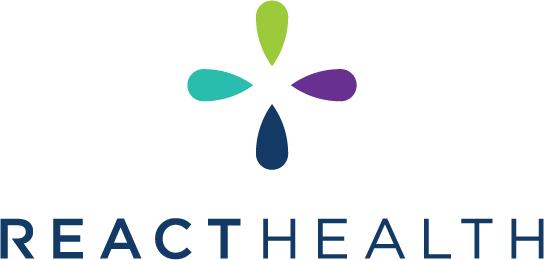Amazon's New Smart Pillow: A Game-Changer for Sleep Apnea Detection?
Amazon, known for its constant innovation and foray into various industries, is now entering the health-tech market with a brand-new product: a smart pillow designed to detect sleep apnea. This cutting-edge pillow leverages advanced sensor technology and machine learning to monitor users' sleep patterns and identify signs of sleep apnea, a condition that affects millions of people worldwide. In this blog post, we'll explore Amazon's new smart pillow, how it works, and its potential implications for diagnosing and managing sleep apnea.
What Is Sleep Apnea?
Sleep apnea is a common but serious sleep disorder characterized by repeated interruptions in breathing during sleep. These interruptions, known as apneic events, can last for several seconds and occur multiple times throughout the night. Obstructive sleep apnea (OSA), the most common type, occurs when the muscles in the throat relax excessively, leading to a blockage of the airway. This can result in loud snoring, choking, gasping for air, and frequent awakenings, all of which significantly impact sleep quality.
Untreated sleep apnea can lead to numerous health issues, including high blood pressure, heart disease, diabetes, and daytime fatigue. Unfortunately, many individuals are unaware they have sleep apnea, as the symptoms often occur during sleep, making it difficult to diagnose without a sleep study. This is where Amazon's new smart pillow comes into play, potentially making sleep apnea detection more accessible.
Amazon's Smart Pillow: How Does It Work?
Amazon's smart pillow is equipped with a series of embedded sensors that monitor various sleep parameters, such as movement, breathing patterns, and snoring. These sensors work in tandem with machine learning algorithms to detect signs of sleep apnea. The pillow collects data during sleep and analyzes it to identify abnormalities in breathing, such as pauses or shallow breathing, which are key indicators of sleep apnea.
The data collected by the pillow can then be transmitted to a companion app, providing users with detailed insights into their sleep health. If the pillow detects potential signs of sleep apnea, the app can prompt users to seek further medical evaluation or consult a healthcare professional. By bringing sleep apnea detection into the home, Amazon's smart pillow aims to bridge the gap between symptom recognition and formal diagnosis.
The Technology Behind the Pillow
The smart pillow utilizes several types of sensors, including microphones to detect snoring, pressure sensors to monitor movement, and accelerometers to track body position. By combining these data points, the pillow can create a comprehensive picture of a user's sleep patterns. Machine learning algorithms are used to analyze the data, identifying patterns that may indicate sleep apnea.
Amazon's expertise in artificial intelligence and machine learning has been instrumental in developing this product. The smart pillow leverages these technologies to provide real-time insights, allowing users to better understand their sleep health. Additionally, the pillow is designed to be comfortable and non-intrusive, making it easier for users to incorporate into their nightly routine without the inconvenience of traditional sleep monitoring devices.
Potential Benefits of Amazon's Smart Pillow
-
Early Detection of Sleep Apnea: One of the most significant benefits of Amazon's smart pillow is its potential to detect sleep apnea early. Many people with sleep apnea go undiagnosed for years, leading to a decline in their overall health. The smart pillow could help users identify the condition sooner, enabling earlier intervention and treatment.
-
Non-Invasive Monitoring: Traditional sleep studies require users to visit a sleep clinic and wear multiple sensors and monitors overnight. Amazon's smart pillow provides a non-invasive alternative that can be used in the comfort of one's own home. This could make sleep monitoring more appealing and accessible to a wider audience.
-
Continuous Sleep Monitoring: Unlike a one-time sleep study, Amazon's smart pillow can provide continuous monitoring, allowing users to track their sleep health over time. This can be particularly beneficial for individuals who are already undergoing treatment for sleep apnea, as they can monitor their progress and make necessary adjustments.
-
User-Friendly Insights: The companion app provides easy-to-understand insights into sleep quality, making it simpler for users to interpret the data. By providing actionable information, the app can help users make informed decisions about their sleep health and seek medical advice if needed.
Challenges and Considerations
While Amazon's smart pillow has the potential to revolutionize sleep apnea detection, there are some challenges and considerations to keep in mind. One major concern is the accuracy of the pillow compared to traditional diagnostic tools like polysomnography, which is considered the gold standard for diagnosing sleep apnea. While the pillow may be able to identify signs of sleep apnea, it is not a replacement for a formal diagnosis by a healthcare professional.
Another consideration is data privacy. Given the sensitive nature of health data, users may have concerns about how their sleep information is collected, stored, and used. Amazon will need to ensure that the data collected by the smart pillow is secure and that users have control over their personal information.
Lastly, the smart pillow's cost may be a barrier for some users. Advanced health-tech products can be expensive, and while Amazon has a reputation for making technology more affordable, it remains to be seen whether the smart pillow will be accessible to a broad audience.
The Future of Sleep Health Technology
Amazon's smart pillow is just one example of how technology is being used to address common health issues like sleep apnea. The integration of artificial intelligence, machine learning, and wearable (or, in this case, sleepable) technology is transforming the way we approach health monitoring. By making sleep health technology more accessible, companies like Amazon are empowering individuals to take charge of their well-being.
If successful, Amazon's smart pillow could pave the way for other tech companies to develop similar products, leading to a surge in consumer-friendly sleep monitoring devices. The ability to detect sleep apnea and other sleep disorders at home could significantly reduce the burden on healthcare systems and improve the quality of life for millions of people.
Conclusion
Amazon's new smart pillow represents an exciting step forward in the world of sleep health technology. By providing a non-invasive, accessible way to detect sleep apnea, the pillow could help bridge the gap between symptom recognition and formal diagnosis. While challenges remain in terms of accuracy, cost, and data privacy, the potential benefits of early detection and continuous monitoring make this product a promising innovation in sleep health.
As more people become aware of the importance of sleep and the risks associated with sleep apnea, products like Amazon's smart pillow could play a crucial role in helping individuals take control of their sleep health. Only time will tell whether this smart pillow will become a staple in bedrooms worldwide, but it certainly has the potential to make a significant impact.
Bibliography:
-
Benjafield, A. V., & Ayas, N. T. (2023). "Advancements in Sleep Apnea Detection Using Consumer Technology." Journal of Sleep Research, 32(4), e13857.
-
Eckert, D. J. (2022). "Home-Based Monitoring for Obstructive Sleep Apnea: Opportunities and Challenges." Sleep Medicine Reviews, 61, 101573.
-
Gozal, D., & Kheirandish-Gozal, L. (2021). "Emerging Technologies in Sleep Apnea Diagnosis and Management." Chest, 159(5), 1906-1917.
-
Patel, S. R., & White, D. P. (2023). "The Role of Artificial Intelligence in Sleep Medicine: A Focus on Consumer Devices." Sleep Health, 9(1), 1-9.
-
Smith, R. O., & Watson, N. F. (2022). "Consumer Sleep Technology: A Review of Market Trends and Research Directions." Sleep Medicine Clinics, 17(3), 365-378.








1 comment
How much are these pillows
Amy Smith
Leave a comment
This site is protected by hCaptcha and the hCaptcha Privacy Policy and Terms of Service apply.